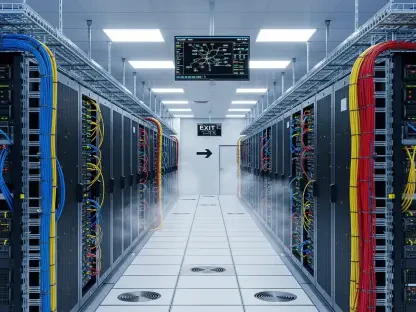In the ever-evolving landscape of federal technology policy, recent developments highlight significant shifts in leadership and legislative initiatives. Central to these changes is Representative Gerry Connolly’s appointment as the ranking member of the House Oversight and Reform Committee, a critical position that affords considerable influence over federal technology and workforce issues. Connolly, a seasoned advocate with a robust history of involvement in technology-related legislative efforts, sets the stage for the committee’s agenda amid brewing challenges and political skirmishes. The article also highlights crucial efforts by Senate Democrats to contest the Trump administration’s controversial Schedule F classification for federal employees. These legislative activities reflect larger debates over federal workforce restructuring and aim to preserve existing civil service protections. Coupled with cybersecurity directives from the Cybersecurity and Infrastructure Security Agency (CISA) targeting federal cloud security protocols, these actions indicate a complex interplay of technology policy, workforce reform, and cybersecurity measures shaping federal governance.
Leadership in Federal Technology and Workforce Policy
Representative Gerry Connolly’s new role as the ranking member of the House Oversight and Reform Committee signals a pivotal development in federal technology oversight and workforce management. Recognized for his instrumental roles in federal technology initiatives such as the Federal Information Technology Acquisition Reform Act (FITARA) and the Modernizing Government Technology Act, Connolly brings significant expertise to the table. These legislative efforts have fundamentally shaped federal technology policy, establishing critical frameworks like the Technology Modernization Fund and reshaping IT procurement processes to enhance accountability and efficiency. Connolly’s leadership is poised to influence ongoing discussions about transparency, efficiency, and technology’s role in government operations.
Connolly’s appointment comes at a time when federal technology and workforce dynamics face increased scrutiny and require nuanced navigation through complex political landscapes. Despite his notable contributions to legislation like the FedRAMP Authorization Act, Connolly’s focus remains firmly on future goals rather than past achievements. His vision emphasizes transparency and truthful policymaking, addressing crucial consumer issues that align with broader public interests. The metaphor of “trench warfare” used by Connolly underscores the anticipated contentiousness of legislative battles, reflecting the broader partisan atmosphere expected in the committee’s future endeavors. This perspective is indicative of potential bureaucratic confrontations and sets the tone for the committee’s aggressive pursuit of its oversight mandate.
The Senate’s Struggle Over Workforce Protection
Simultaneously, the Senate has become a battleground for federal workforce reform, with a significant faction of Senate Democrats actively opposing the Trump administration’s Schedule F implementation. This classification would have altered the landscape of civil service protections, prompting Senators Mark Warner, Chris Van Hollen, and Tim Kaine to spearhead efforts to counteract the measure. Their proposal, the Saving the Civil Service Act, represents a strategic legislative maneuver aimed at safeguarding existing civil service structures. However, their efforts were thwarted when the Republican majority, represented by Senator Eric Schmitt, swiftly dismissed the motion.
The rejection of the Saving the Civil Service Act underscores a stark political divide that has profound implications for federal employment systems. Senator Schmitt’s assertion that Democrats sought to “Trump-proof” the workforce highlights fundamental disagreements over the trajectory and integrity of civil service protections and workforce classification. Despite this setback, Senator Kaine remains fervent in the commitment to champion civil service protections, continuing to advocate for measures that emphasize fairness and meritocracy in federal employment. This ongoing legislative struggle illustrates the complexities inherent in managing workforce policies in a polarized political environment, highlighting fundamental ideological differences that influence the structure and function of the federal bureaucracy.
Enhancing Cybersecurity amid Evolving Threats
As political debates over technology and workforce policy ferment, cybersecurity remains a persistent priority within government circles. The Cybersecurity and Infrastructure Security Agency recently issued a binding operational directive to federal civilian agencies, mandating the adoption of enhanced security measures for cloud services. This directive represents a proactive approach to safeguarding federal digital infrastructure, particularly in response to rising threats to cloud security across both federal and private sectors. Emphasizing secure configurations for commonly used Software as a Service (SaaS) products, CISA’s directive rallies federal efforts to standardize cloud security practices.
CISA Director Jen Easterly has been vocal about the importance of robust cloud security measures, emphasizing the ever-present risk landscape that demands vigilant security protocols. By mandating the use of automated tools developed by CISA for the evaluation and maintenance of secure configurations, this directive aligns with a broader strategy of fortifying federal cybersecurity infrastructure. The initiative underscores an overarching commitment to embedding strong security practices within digital ecosystems, addressing both immediate threats and laying the groundwork for long-term resilience against evolving cyber challenges. This focus exemplifies the federal government’s dedication to prioritizing cybersecurity enhancements as an integral component of comprehensive technology policy.
Navigating Fiscal Challenges and Future Directions
The appointment of Representative Gerry Connolly as the ranking member of the House Oversight and Reform Committee marks a noteworthy shift in federal technology oversight and workforce management. Connolly, acclaimed for his critical contributions to federal technology legislation such as FITARA and the Modernizing Government Technology Act, offers substantial expertise. These initiatives have deeply influenced federal tech policy, framing systems like the Technology Modernization Fund and reforming IT procurement to boost accountability and efficiency. Connolly’s leadership is set to steer ongoing dialogues on transparency, productive governance, and technology’s governmental role.
This appointment occurs amidst heightened examination of federal technology and workforce dynamics, necessitating skillful handling of intricate political landscapes. Although Connolly has been integral to acts like the FedRAMP Authorization Act, he remains focused on future ambitions. His vision spotlights transparency and integrity in policymaking, directly addressing key consumer concerns that resonate with public interests. The “trench warfare” metaphor used by Connolly signals anticipated contentious legislative debates, mirroring the expected partisan climate in the committee’s forthcoming activities. This viewpoint predicts potential bureaucratic clashes and sharpens the committee’s focus on its vigorous oversight mandate.









